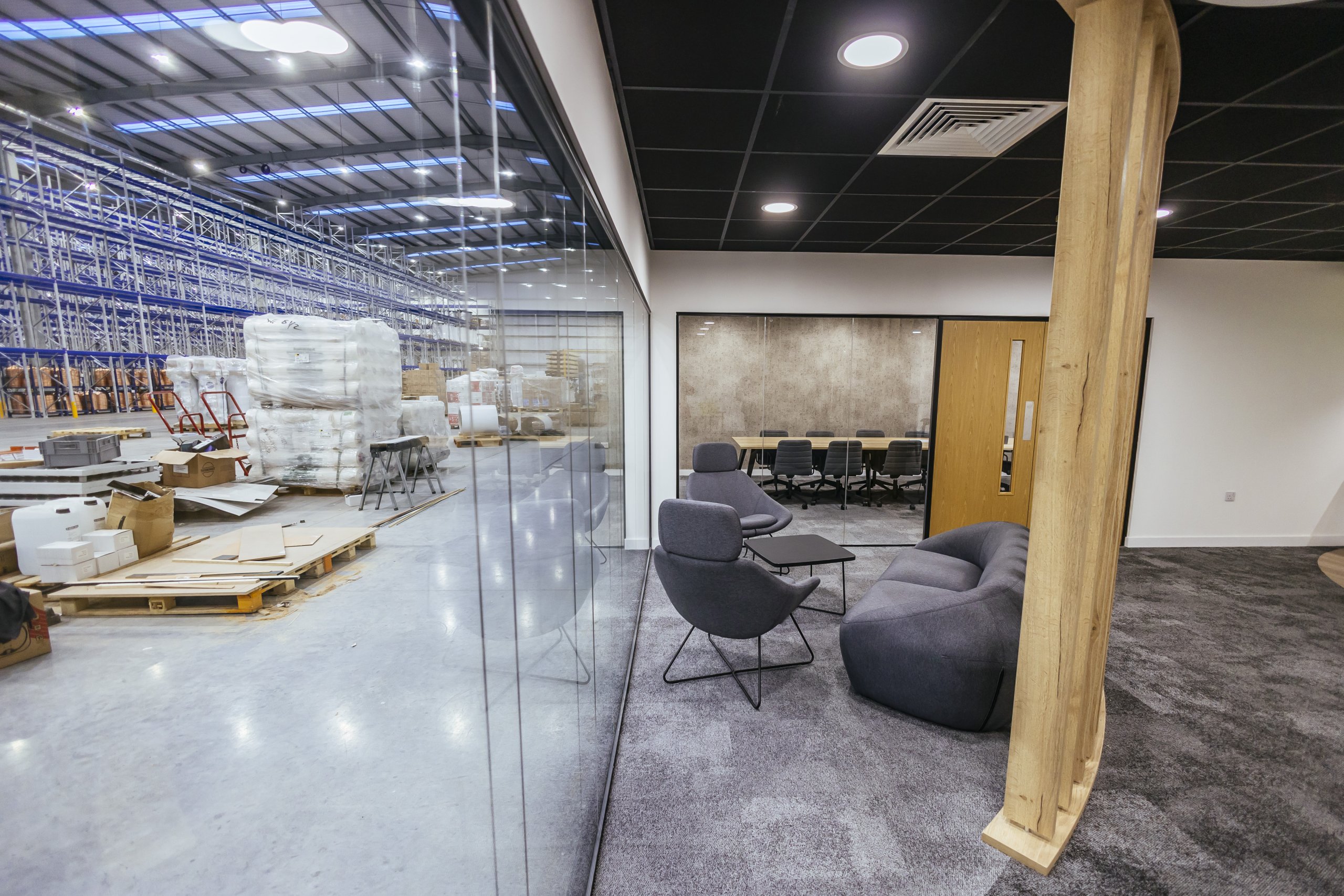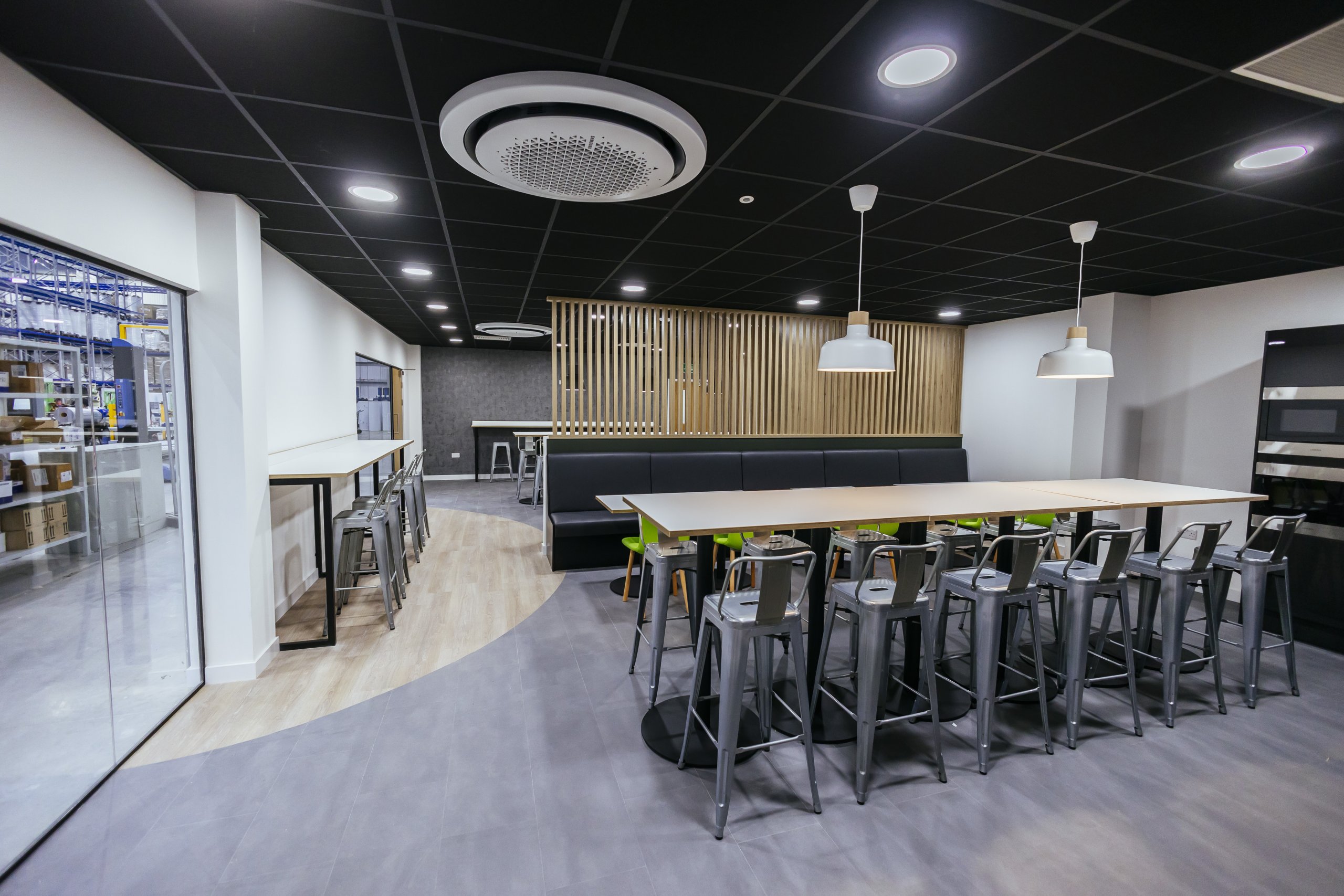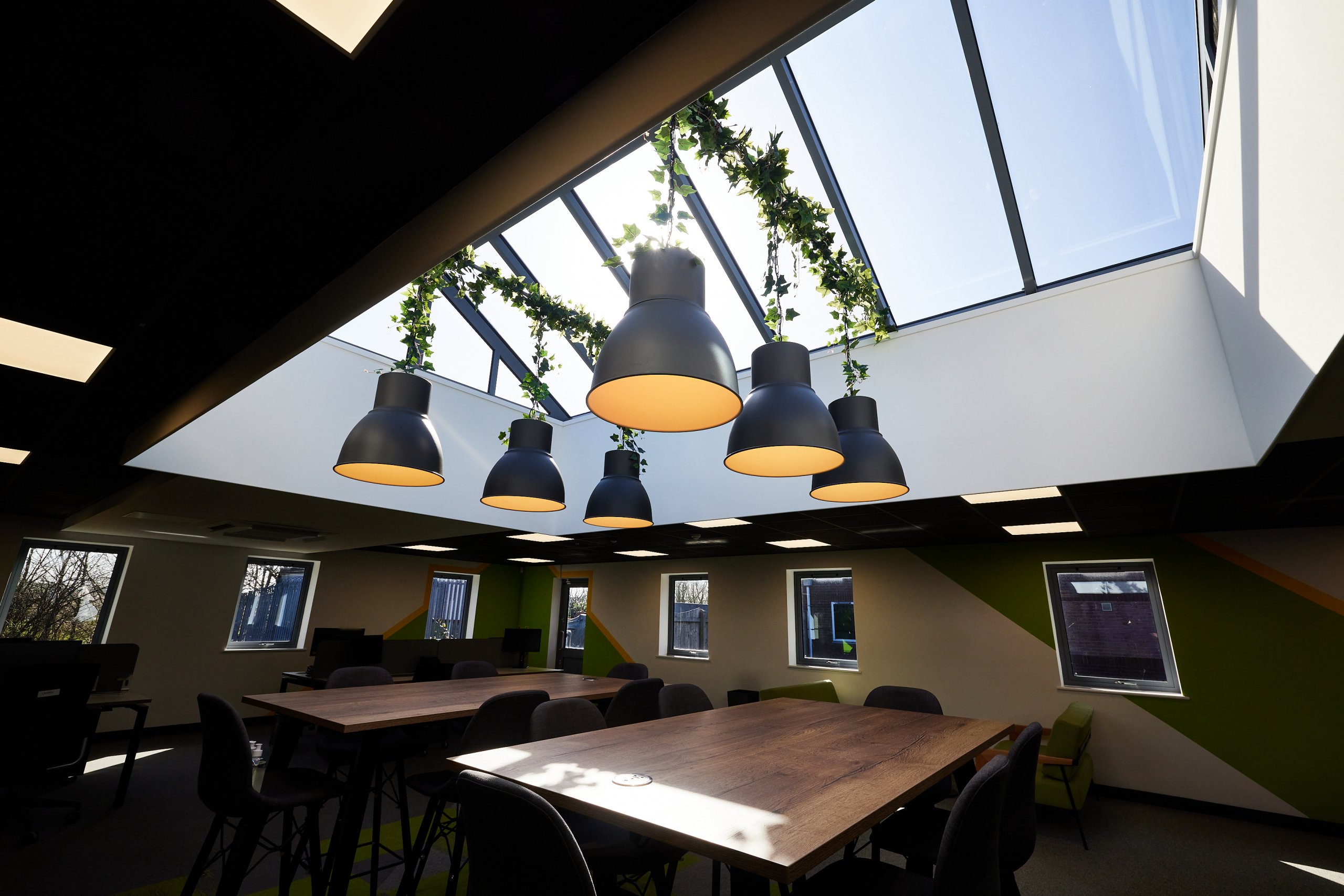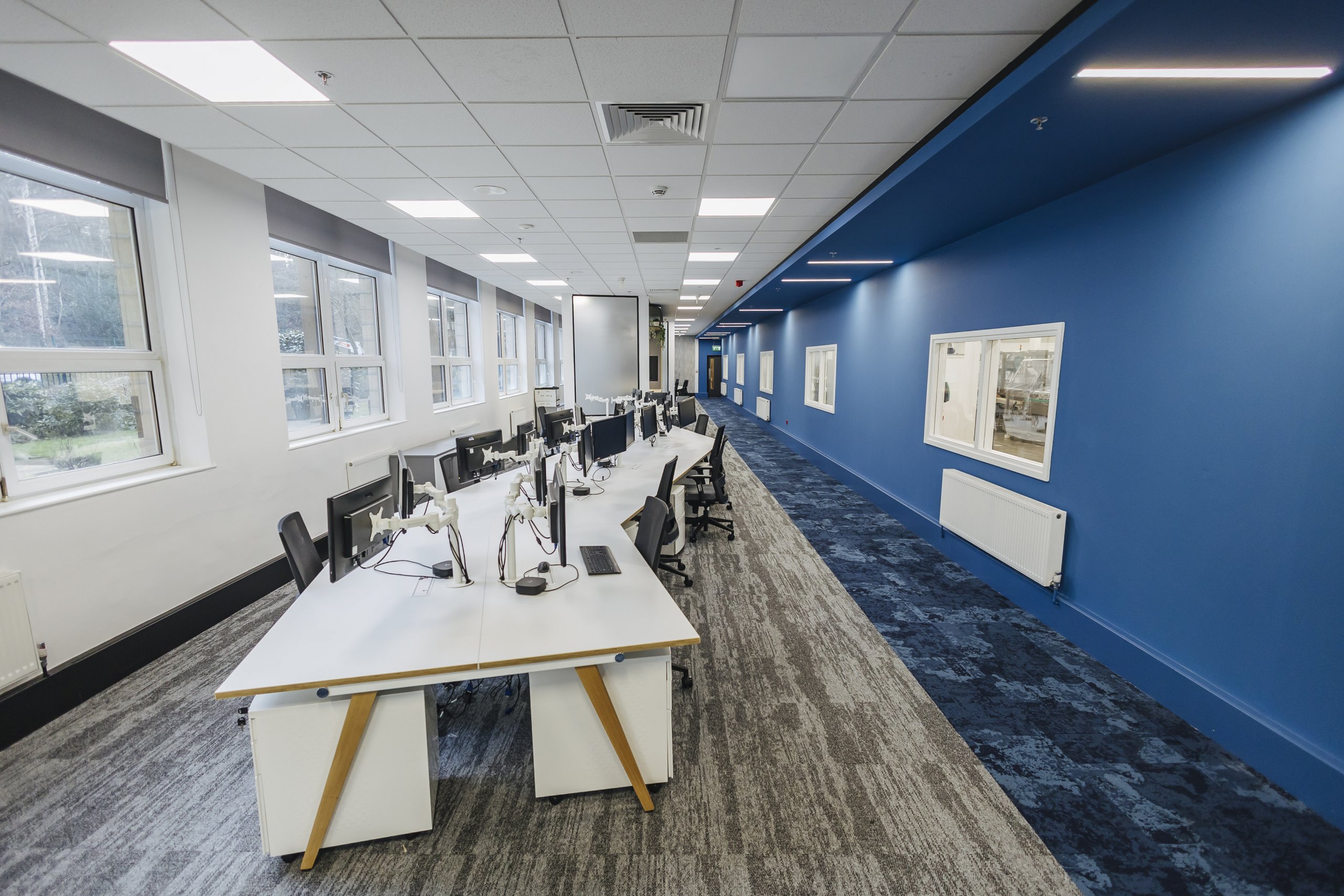Having the right kind of office space to suit the needs of your company is essential when designing any workplace.
Office layout, design and decoration all play a huge part in increasing employee productivity and production. An industry where this becomes even more important is within the manufacturing sector.
Due to the vast scale of many manufacturing companies, they tend to have a lot of different departments operating simultaneously, and often interlinking with each other. As a result, their offices need to be multi-functional and suitably cater to the needs of their employees.
As well as serving operational needs, an office space should also be comfortable to work in for long periods of time and encourage a positive company culture.
Here are 5 key features to consider when designing an office space for a manufacturing company:
Many employers automatically lay desks out in rows for ease of use, however, other options are likely to make much better use of the space you have available. Office layout can also have a massive impact on employee happiness and productivity, so getting it right can lead to higher employee retention.
“Hot desking” is currently very popular due to the rise in hybrid working. With hot desking, desks are allocated to workers as and when they’re in the office. Employees aren’t assigned their own desk and desk numbers are reduced, which leaves space for extra communal areas, agile spaces, and kitchen amenities.
If you’d like all employees to have their own desk, grouping them

together is a good idea. Grouped desks allow employees to easily communicate and collaborate on ideas, which is often needed when working within the manufacturing space. Collaboration is much more difficult if desks are arranged in rows and can lead to excess noise in the office.
Also consider whether office staff will need access to the workshop floor. Positioning desks for easy factory access will make communication easier. Windows into the workshop and soundproof walls may also be good features to consider for the benefit of office staff.

It’s important to consider the different ways your office design caters to the needs of your staff. While open plan desks allow for collaboration, at times your employees may want to work individually given the manufacturing industry can be stressful at times.
To allow for this, installing private working pods during your office refurbishment is a good idea. Secluded, contained spaces offer the perfect breakout space, intimate meeting space, or quiet spot to make important calls. They also offer a tranquil environment where employees can escape from noisy work surroundings.
A truly agile workspace caters for all personality traits, whether you thrive from collaboration and working amongst your team, or you need quiet zones if your work requires privacy- all areas can be included within open plan office spaces without incurring significant building costs.
Deciding how you build the foundations and structure of your workplace is crucial to creating an office space that works for your company – and material choice plays a huge part in this.
It’s important to think about the longevity of the materials you choose, their robustness, and how they’ll look once installed. Fragile materials such as glass, smooth metals and glossy woods are likely to be unsuitable for manufacturing environments. These materials mark easily and can quickly look tired and worn.
The industrial trend, which is currently very popular, is an ideal style to tap into when designing a manufacturing company office.

This trend embraces a raw, exposed, and unfinished look using raw materials such as metals, dark woods and brickwork.
Once installed, raw materials typically require very little maintenance. Any bumps or scuffs that occur simply add to their unique appearance, which is why the industrial look and the manufacturing sector tend to work well together.

Manufacturing industry office spaces don’t have to be bland or dingy. In fact, with innovation being an integral part of the industry, having an office space that inspires and encourages new ideas should be prioritised.
Injecting colour into your workplace is one way to inspire your employees. Shades of yellow and orange promote creativity and enthusiasm, so are good colours to add into a manufacturing office design. Think about colour-blocking sections of your office to break the room up and create separate areas. A whole room painted yellow could be overpowering but adding an accent colour will brighten the room and make it more inviting.
Green is another colour that works well in offices. Shades of green have a calming effect and tie in with the current biophilic interior trend. Biophilic design is the practice of connecting people to the natural world by introducing more daylight, living plants and natural elements into living and workspaces.
A recent study – The Relative Benefits of Green versus Lean Office Space – found that workers with an exposed level of contact with nature were 15% more productive compared to those with minimal contact.
By incorporating biophilic features into your office design, you will immediately set yourself and your employees up with a positive working environment, which will have a positive impact on your overall business.
If the infrastructure of your office can’t support your redesign, it won’t allow your employees to do their jobs properly.
A recent survey revealed that 85% of employees believe they could do their job better if given the right technology to work with. For a successful office redesign that embraces modern working styles, the appropriate technology needs to be included in the initial design.
Businesses now rely heavily on digital communication, especially videoconferencing, so workspace designs need to accommodate this.

Ensure your meeting rooms are designed to house the technology needed to perfectly run virtual meetings. Projectors, in-desk power solutions and HD cameras are all typically required. Recurring technical hiccups during meetings won’t look professional, so make sure your video-conferencing technology is updated and thoroughly planned out during the office design process.
Your manufacturing business will no doubt also rely heavily on tech-heavy staff such as designers, developers and coders. These jobs typically require 2-3 desktop monitors to allow for easier multitasking. Ensure the new desks you plan on using are large enough to accommodate the technology equipment needed for staff to carry out their jobs successfully.
Other technology features to consider include: internet/wireless capabilities, charging stations, audio-visual solutions, cable management, ventilation systems and lighting solutions. These technology features can actually enhance an office’s interior too, providing practical solutions as well as making your office look modern and sleek.
If you’d like to speak to us about the fit-out of your manufacturing industry office space, or any other office redesign, please call us on 0113 388 6522, or email us at contact@buildinginteriorsgroup.co.uk.
Our full contact details can be found here: https://buildinginteriorsgroup.co.uk/contact-us/.